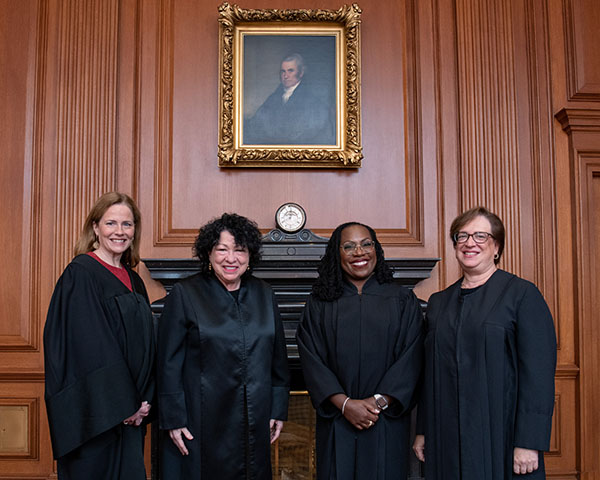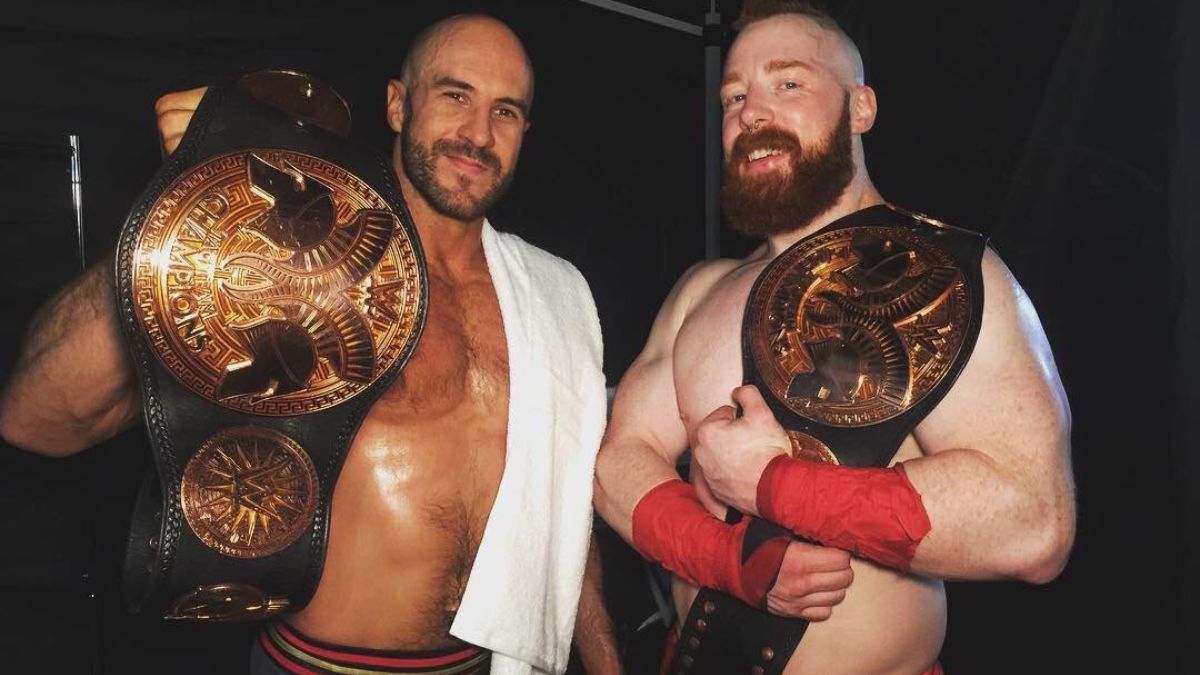Alito And Roberts: Two Decades On The Supreme Court Bench

Table of Contents
Justice John Roberts: The Chief Justice's Balancing Act
Justice John Roberts' tenure as Chief Justice has been marked by a complex balancing act. He navigates the often-fractious ideological divisions within the Court while striving to maintain its institutional legitimacy.
Roberts' Judicial Philosophy
Chief Justice Roberts is often described as a textualist and an originalist, though his pragmatism sometimes transcends these labels. He emphasizes the literal meaning of the text of the Constitution and statutes, attempting to interpret them as they would have been understood at the time of their enactment. However, his approach isn't rigidly ideological; he has shown a willingness to consider practical consequences in his decisions.
- NFIB v. Sebelius (2012): Roberts upheld the Affordable Care Act's individual mandate as a tax, a move surprising to many conservative commentators, showcasing his pragmatic approach over strict originalism.
- King v. Burwell (2015): In a crucial decision regarding healthcare subsidies, Roberts sided with the liberal justices, preventing a significant blow to the ACA.
- Bostock v. Clayton County (2020): Roberts joined the majority opinion holding that Title VII of the Civil Rights Act of 1964 protects employees against discrimination based on sexual orientation and gender identity, highlighting a less strictly conservative stance in this instance.
His attempts to forge consensus and avoid deeply partisan rulings are evident in many 5-4 decisions. He often seeks to craft narrow opinions, aiming for a majority rather than a sweeping ideological victory. This pursuit of judicial restraint, within the context of the Chief Justice's role, significantly influences the Supreme Court's overall direction.
Key Decisions Under Roberts' Leadership
The Roberts Court has decided numerous landmark cases that have redefined areas of American law. His leadership has profoundly shaped the Court's trajectory.
- Citizens United v. FEC (2010): Although Roberts didn't author the opinion, his concurrence signaled a significant shift in campaign finance law.
- Obergefell v. Hodges (2015): While he dissented, this landmark ruling legalizing same-sex marriage underscored the deep ideological divisions within the Court under his leadership.
- Shelby County v. Holder (2013): This case significantly altered voting rights legislation, highlighting the Court's ongoing debate over federalism.
The legal reasoning and dissenting opinions in these cases often reveal stark ideological divides, emphasizing the challenges inherent in leading a deeply divided Supreme Court. The legacy of the "Roberts Court" continues to be debated extensively.
Justice Samuel Alito: A Conservative Voice on the Court
Justice Samuel Alito has consistently emerged as a strong conservative voice on the Supreme Court, significantly impacting its jurisprudence. His judicial philosophy is rooted in strict constructionism and originalism.
Alito's Judicial Philosophy
Justice Alito's judicial philosophy is characterized by a strict constructionist approach to statutory interpretation and a strong emphasis on original intent in constitutional interpretation. He generally favors a limited role for the judiciary in shaping public policy.
- Citizens United v. FEC (2010): Alito's majority opinion significantly broadened the scope of free speech in campaign finance.
- Shelby County v. Holder (2013): Alito's majority opinion weakened the Voting Rights Act of 1965.
- Dobbs v. Jackson Women's Health Organization (2022): Alito's majority opinion overturned Roe v. Wade, representing a significant victory for the conservative movement and a dramatic shift in abortion rights.
His approach reflects a belief in limiting the federal government’s power and emphasizing states' rights. His emphasis on original intent focuses on the historical context of laws and constitutional provisions, seeking to understand their original meaning.
Alito's Impact on Key Areas of Law
Justice Alito's influence extends across numerous areas of law, shaping legal precedent and sparking significant social and political debate.
- Abortion Rights: The overturning of Roe v. Wade in Dobbs stands as his most impactful ruling, with profound consequences for women's reproductive health.
- Religious Freedom: Alito's opinions frequently address religious freedom cases, advocating for the protection of religious exercise.
- Campaign Finance: His role in Citizens United reshaped campaign finance law, generating ongoing controversy regarding the influence of money in politics.
The societal consequences of these rulings are far-reaching and continue to be debated vigorously. His contributions to these areas of law have solidified his position as a major influence on the Supreme Court's conservative shift.
The Alito and Roberts Dynamic: Collaboration and Conflict
While both Justices Alito and Roberts are considered conservatives, their approaches and priorities sometimes differ, leading to both collaboration and conflict.
Areas of Agreement and Disagreement
Despite their shared conservative leanings, Justices Alito and Roberts have demonstrated both alignment and divergence in their judicial opinions.
- Agreement: Both justices consistently voted conservatively in cases related to religious freedom and federalism.
- Disagreement: Their approaches to the Affordable Care Act, as noted above, reveal a key divergence in their judicial philosophies.
Understanding their differences requires considering their individual approaches to constitutional interpretation and their differing views on the role of the judiciary.
The Impact of Their Jurisprudence on American Society
The combined influence of Justices Alito and Roberts has profoundly impacted American society, politics, and the legal landscape.
- Political Polarization: Their decisions have fueled existing political divisions and intensified debates on key social issues.
- Legal Precedent: Their rulings have established new legal precedents that will shape future litigation and legal interpretations.
- Public Opinion: Their decisions have significantly influenced public opinion and shaped political discourse, leading to protests and activism.
The ongoing debates and controversies surrounding their legacies underscore their considerable impact on the nation.
Conclusion: Assessing Two Decades of Influence on the Supreme Court Bench
Justices Alito and Roberts' two decades on the Supreme Court have left an indelible mark. Chief Justice Roberts has attempted a balancing act, seeking consensus while navigating intense ideological divisions. Justice Alito has emerged as a powerful voice for conservative jurisprudence, reshaping key areas of law. Their collaboration and conflicts reflect the complex dynamics within the Court and have had profound effects on American society. Their influence continues to shape the ongoing conversation surrounding the Supreme Court and the future of American law. To further research on Alito and Roberts and explore the impact of the Roberts Court, consider diving into the detailed opinions of landmark cases and engaging with legal scholarship analyzing their jurisprudential approaches. Deepen your understanding of Supreme Court decisions and their broader implications on American life.

Featured Posts
-
 Abn Amro Opslag Problemen Met Online Betalingen
May 21, 2025
Abn Amro Opslag Problemen Met Online Betalingen
May 21, 2025 -
 Historic Night New Womens Tag Team Champions On Wwe Raw
May 21, 2025
Historic Night New Womens Tag Team Champions On Wwe Raw
May 21, 2025 -
 Jalkapallo Friisin Valinnat Kamara Ja Pukki Vaihdossa
May 21, 2025
Jalkapallo Friisin Valinnat Kamara Ja Pukki Vaihdossa
May 21, 2025 -
 Le Vignoble Nantais Et La Loire A Velo 5 Itineraires A Explorer
May 21, 2025
Le Vignoble Nantais Et La Loire A Velo 5 Itineraires A Explorer
May 21, 2025 -
 12 Ai Stocks To Watch Insights From The Reddit Community
May 21, 2025
12 Ai Stocks To Watch Insights From The Reddit Community
May 21, 2025
